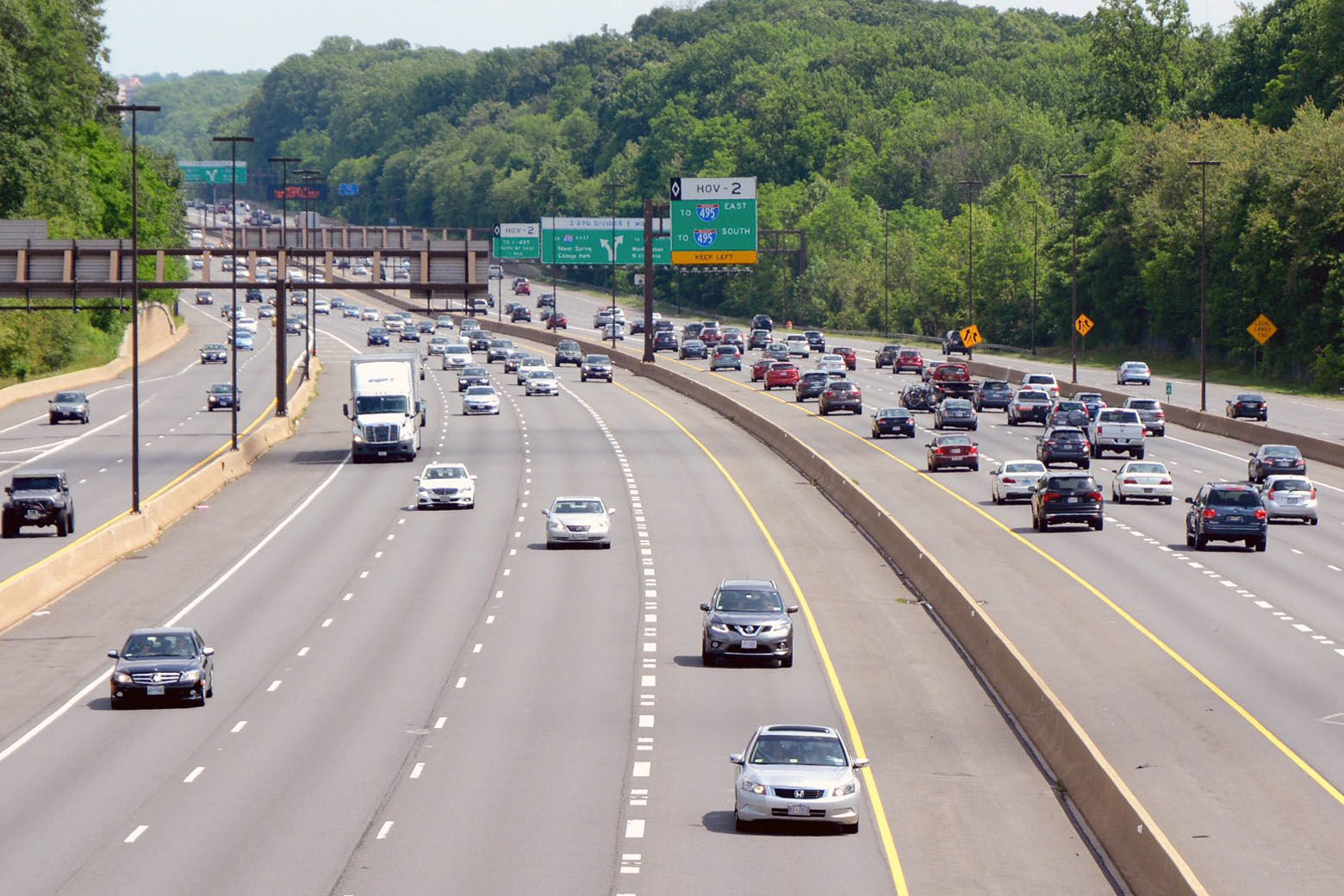This article was republished with permission from WTOP’s news partners at Maryland Matters. Sign up for Maryland Matters’ free email subscription today.

This content was republished with permission from WTOP’s news partners at Maryland Matters. Sign up for Maryland Matters’ free email subscription today.
Amidst an unprecedented surge in telework that has taken hundreds of thousands of cars off the road, critics of a state plan to widen two Washington, D.C., area highways with toll lanes urged transportation officials on Thursday to put the project on hold.
Many residents and activists who spoke during the public comment portion of the Maryland Transportation Authority’s April meeting opposed the plan to widen the Capital Beltway and Interstate 270 long before the COVID-19 crisis struck.
But they told the panel — which met virtually due to the ban on gatherings of more than 10 people — that enormous changes that have rippled through society over the last six weeks should lead to a “pause, and then a reassessment” of the Hogan administration push to add four lanes to the two highways.
“The state’s decision to forge ahead along the pre-pandemic timeline does not show good stewardship of Maryland’s financial well-being,” said Janet Gallant, coordinator of the group DontWiden270.org.
“All of the current project’s key financials, including the all-important projected tolls, are based on assumptions and projections that no longer apply,” Gallant said. “No one knows how many businesses will adopt telework, how many jobs won’t come back, and what post-pandemic traffic patterns will look like.”
Many companies and workers are teleworking for the first time. How many continue teleworking after the pandemic subsides is a question that transportation officials and industry consultants will study for some time.
“The question is what is the long-term impact going to be, what impact will this have on office space in the Baltimore-Washington region and on commuting patterns,” said former Maryland Transportation secretary David L. Winstead. “Toll facilities are obviously suffering. Revenues are down for the Maryland Transportation Authority.”
Gov. Lawrence J. Hogan Jr. (R) announced plans to contract with private firms to finance and build new lanes on portions of the Beltway and I-270 in 2017. Since the coronavirus struck, critics have been scouring the globe for instances in which public-private partnership (P3) firms have encountered financial strain.
“Employees’ preferences and employers’ interest in reducing office space and cost suggests much telecommuting will be permanent,” Ross Capon, past president of Wyngate Citizens Association in Bethesda, told the Maryland Transportation Authority (MdTA).
“Highway toll revenues worldwide have plummeted — leading to bond downgrades and [investor] calls and lawsuits from tolling companies seeking taxpayer support,” he added.
For many years, commutes in the D.C. region have been among the nation’s longest. But a number of factors could alter that, industry experts say.
Among them:
- Firms that have lost revenue may be forced to lay off workers
- Companies that need to reconfigure office space, to put more distance between workers, may require some personnel to work from home
- Employees are likely to pressure managers to allow more telework
- A shortage of daycare options may lead to a migration to jobs that allow telecommuting
“The COVID new normal is going to be change and increased telework for lots of different reasons,” said Wes Guckert, president of The Traffic Group, a Baltimore-based transportation consulting firm that has offices across the country.
“People are starting to figure out that they can be productive, they can work whenever they want, as long as they’re putting in the hours.”
Guckert said a relatively small reduction in the number of vehicles on the road can make a big difference in commute times.
“Believe it or not, the difference between August traffic and September traffic is typically 6% to 10%,” he said. “Six to 10% fewer cars is going to make a huge difference.”
Guckert predicted that firms interested in bidding on Maryland’s P3 toll lanes — estimated to run between $9 billion and $11 billion — will adopt a cautious approach because of the radical changes in work life that have hit the globe.
“What’s going to happen is our firm is going to collect data for some of the concessionaires so that they can see and redo their pro forma, so that they can figure out whether or not the P3 is still going to be a good investment,” he said.
Guckert predicted a vigorous bounce-back for the Washington region — enough to warrant continued interest in the Maryland project.
“This region is going to continue to grow,” he said. “We’re going to be bringing manufacturing back into our country, from offshore to onshore. And a lot of that is going to happen in the Washington region, because of FDA [the U.S. Food and Drug Administration], because of NIH [the National Institutes of Health], as just two examples.”
In a lengthy briefing for the MdTA board prior to the public comment period, Lisa B. Choplin, the Director of the Maryland Department of Transportation’s I-495 & I-270 P3 Office, made no mention of the government’s “stay-at-home” order or the potential changes in U.S. work-life.
Transportation Secretary Greg Slater said “every ounce of comment, every ounce of feedback, every minute of collaboration is important to me and it’s important to the project as it develops.”







